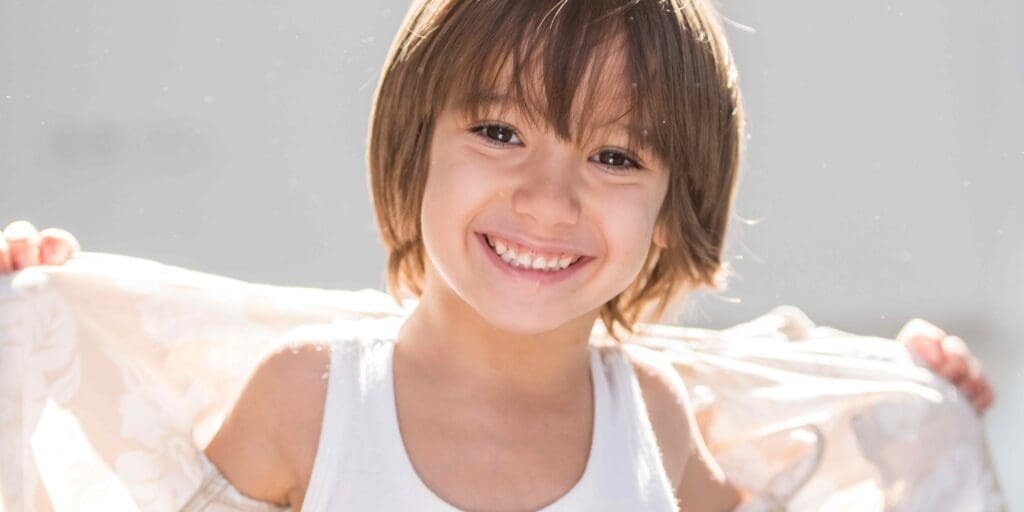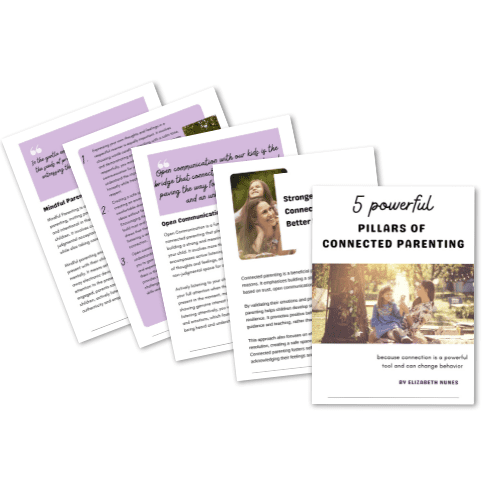7 Easy Ways To Use Open Ended Questions For Kids
Tired of the typical one-word answer from your child? The problem is the type of question you are asking. You’ll notice your child’s communication skills improve and start some meaningful conversations with these open ended questions for kids.
The awesome thing about open ended questions is that there really is no wrong answer, and they encourage creative thinking, create lively conversation and help develop language skills.
Aside from starting great conversations you’ll learn about your child’s favorite subject, get more insight about their day at school and maybe even find out what they are seeing on their social networking sites. You may even learn new facts such as their favorite movie or favorite book.
Asking these types of divergent questions in early childhood can help you create a better relationship with your child while working on your child’s language development.
I like to ask good open-ended questions after school and during bedtime routines while we spend some good old quality time together and strengthen positive relationships.
So why should you use open ended questions with your kids, how do you use them and what are some examples? Keep reading below to see if you can open some lines of communication with your kids.
This post may contain affiliate links. Full privacy policy and disclosure here.

benefits of open-ended questions
Although open ended questions are great for starting conversations, we also need to ask closed-ended questions from time to time. Closed questions only require short or one-word solutions, and there is occasionally only one correct answer.
Closed questions are great for figuring out what a child knows. They are frequently used by caregivers and teachers to find a beginning place for learning.
They’re also useful when you need a quick response, such as “Could you assist me with dinner?” The response to this is either “Yes” or “No.” as some common examples of close-ended questions.
Closed questions, on the other hand, have the tendency to conclude conversations until you contribute more. This is especially true with toddlers. This prevents kids from expressing themselves or practising their language abilities and vocabulary.
It’s totally up to you to decide what kind of question is acceptable in the given situation. You can change up the words or start with a different one to make them your own. A few examples of closed vs. open-ended questions are as follows:
Asking open-ended questions has various advantages, including:
- Encourages children to think outside the box: open-ended questioning can inspire children to think outside the box.
- Finding solutions: Children are allowed to consider as many options as they like before deciding on a solution with some great questions. This is a great way to practise problem-solving abilities since there are no wrong answers and no wrong questions.
- It makes it easier to incorporate more information: To obtain extra information, certain questions allow the child to express feelings and a different attitude. There are endless possibilities to allow your child to learn empathy and growth mindset skills.
- Better understanding: These types of questions can help people learn more about a subject and collaborate.
- Increases vocabulary and speech: Children must explain and describe their answers to the questions. This broadens their lexicon, language, and speech.
See also: Would You Rather Questions For Kids and The Best Get To Know You Questions For Kids

How to Use Open-Ended Questions With Kids
Open-ended questions can be almost anything if you use the right questions. They frequently begin with “how,” “why,” or phrases implying a want to learn more, such as “Tell me about…”, “I’d like to hear more about…”, or “I’d like to know more about…”
the best ways is to start the conversation with a “What” inquiry that has a specific answer. You can ask, “What is that?” by pointing to something. or “What is the name of this?”
Once they’ve responded, try to repeat it – this will reassure them that their response is correct, such as “Yes, that is a bike.” You’re giving them the assurance they need to keep answering.
Now it’s time to expand, but utilize simple words and brief phrases depending on their age. When you keep things simple, you give people the opportunity to emulate you, which expands the dialogue.
Here’s an example: “That is, a blue bicycle.” What do you believe that bike’s destination is? Yes, it appears to be riding through the park.”
You can lengthen the questions with older children to make them more challenging. Always remember that any answer will suffice – there are no right answer.
Make an effort to ask questions in a way that your child can understand. They should be able to think about it even if they can’t find an answer.
It may take some practise to ask open-ended questions. We are all guilty of asking closed-ended questions as parents. It becomes the norm, especially when we’re pressed for time and can’t afford to listen to lengthy responses.
Don’t worry; asking open questions is a simple habit to develop.
There are a few sentences you can use if you’re not sure how to start a query like this:
- “Tell me more about it…”
- “In what way can/did/would…”
- “What would you do about…”
- “Why do you think…”
- “What could happen if…”
- “I wonder why/what/if…”
- “How can we…”
After you’ve asked your inquiry, give them some time to consider their response. You should devote more attention to your child the younger he or she is. Young children usually need more time to come up with an explanation and figure out how to convey it.
Instead of using open-ended questions to obtain information, utilise them to initiate a dialogue. You’ll soon be involved in some of the most fascinating discussions. You might get responses you didn’t expect them to give.
See also: Tips To Make The First Day Of Preschool Exciting

Open-Ended Questions for Kids
There are no clear right or wrong responses to open-ended questions. They should elicit discussion and perhaps even more questions. Here is a list of open-ended questions:
- Do you enjoy any sports, and why did you choose those?
- What was the best part of your day?
- What foods do you love and why?
- What’s your favorite thing about school?
- What is your favorite song?
- Why did you decide to draw that picture?
- If you could do any activity in your free time, which one would you choose?
- What makes a nice friend?
- What was your favorite food at the dinner table?
- If you had a magic power, which one would it be and why?
- How did this happen?
- What does your dream house look like?
- How does this work?
- Why did you choose to read that book?
- What does this remind you of, and why is that?
- What happened next?
- What is your favorite family tradition?
- What are you looking most forward to this month?
- How are these different?
- What could we have done instead?
- What makes you laugh the most, and why?
- What’s the first thing you want to do when you’re at the beach?
- What did you enjoy the most about this weekend, and why?
- What other tools can you use?
- What do you think this book is about?
- Why is that your favorite toy?
- What do you think about school?
- Are there other solutions to the problem?
- What can you do differently next time?
- How did you create this color?
- Can you tell me about what you’re doing?
- What does this represent to you?
- Can you compare these two — how are they different?
- How did you predict the answer?
- What else would you like to know?
- What can you tell me about this?
- What do you think will happen?

How to Involve Children in Discussions
One of the most important reasons to ask questions is to help your child improve his or her language abilities, and the greatest method to do so is through discussions. Here are some helpful hints:
- Sit close to your child at eye level so you can look them in the eyes.
- Tune in and pay attention: Always be on the lookout for methods to improve your listening skills. Pay attention to your child’s movements and sounds, even if they aren’t yet speaking words.
- Take it in turns: Allow them space to communicate what they’re trying to say if they don’t speak yet. Respond with basic words before moving on to the next question.
- Activities involving questions: Examine what they’re doing, what they’re looking at, or what they’re playing with, and then inquire accordingly. Ask a series of open-ended questions to get them chatting.
- Avoid chatting about the latest Netflix episode and instead relate to experiences and passions. Instead, inquire about their hobbies and interests; perhaps they’ve lately had an experience.
- Questions to include: Ask your child questions about their activities, such as what they’re going to do next or what happened here, to model new language.
- Pay attention to the looks on people’s faces: Both parties should participate in the discussion. Examine their facial and bodily expressions; if they appear uninterested, shift the conversation’s focus.


